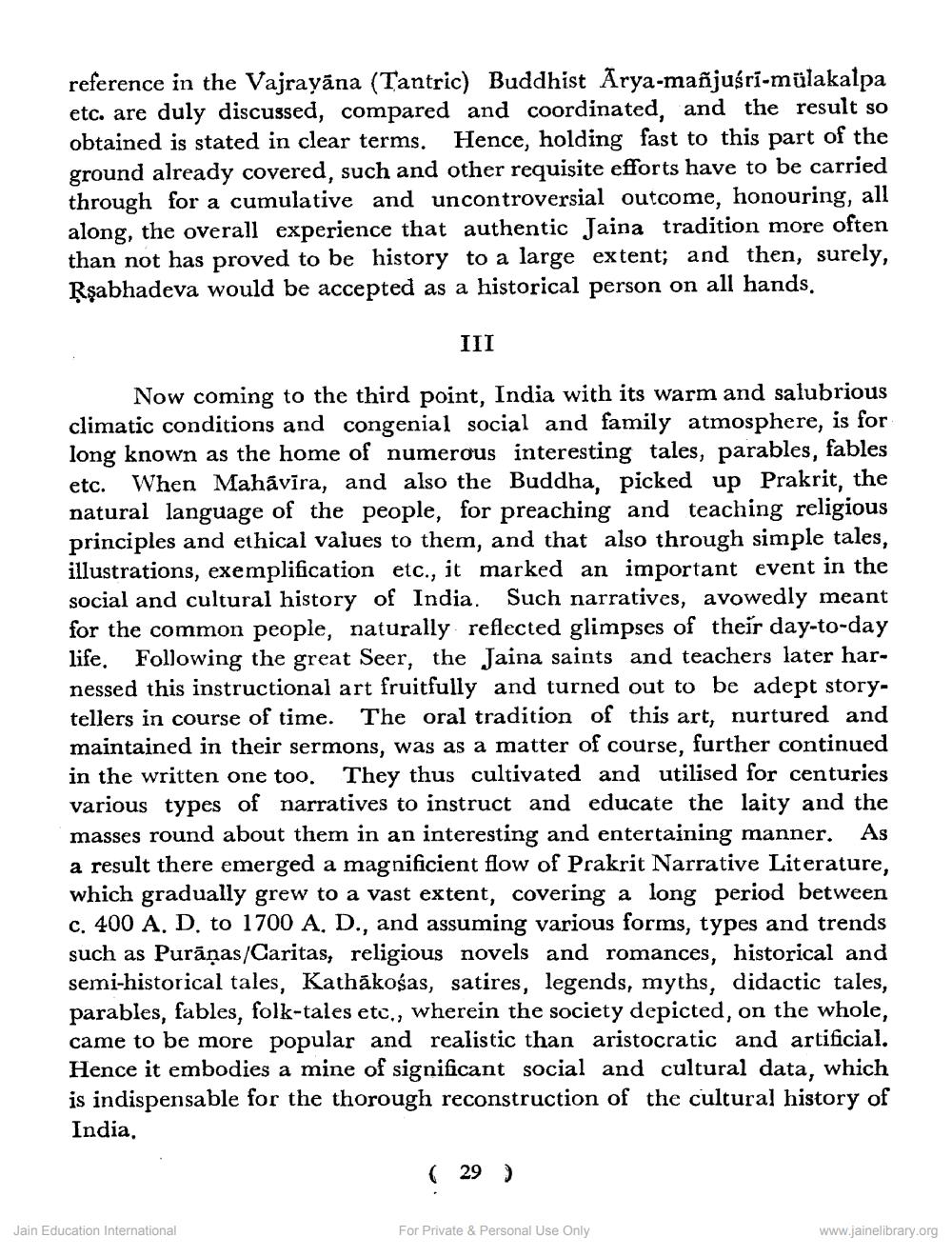________________
reference in the Vajrayana (Tantric) Buddhist Arya-mañjuśrī-mülakalpa etc. are duly discussed, compared and coordinated, and the result so obtained is stated in clear terms. Hence, holding fast to this part of the ground already covered, such and other requisite efforts have to be carried through for a cumulative and uncontroversial outcome, honouring, all along, the overall experience that authentic Jaina tradition more often than not has proved to be history to a large extent; and then, surely, Rşabhadeva would be accepted as a historical person on all hands.
III
Now coming to the third point, India with its warm and salubrious climatic conditions and congenial social and family atmosphere, is for long known as the home of numerous interesting tales, parables, fables etc. When Mahavira, and also the Buddha, picked up Prakrit, the natural language of the people, for preaching and teaching religious principles and ethical values to them, and that also through simple tales, illustrations, exemplification etc., it marked an important event in the social and cultural history of India. Such narratives, avowedly meant for the common people, naturally reflected glimpses of their day-to-day life. Following the great Seer, the Jaina saints and teachers later harnessed this instructional art fruitfully and turned out to be adept storytellers in course of time. The oral tradition of this art, nurtured and maintained in their sermons, was as a matter of course, further continued in the written one too. They thus cultivated and utilised for centuries various types of narratives to instruct and educate the laity and the masses round about them in an interesting and entertaining manner. a result there emerged a magnificient flow of Prakrit Narrative Literature, which gradually grew to a vast extent, covering a long period between c. 400 A. D. to 1700 A. D., and assuming various forms, types and trends such as Purāṇas/Caritas, religious novels and romances, historical and semi-historical tales, Kathākośas, satires, legends, myths, didactic tales, parables, fables, folk-tales etc,, wherein the society depicted, on the whole, came to be more popular and realistic than aristocratic and artificial. Hence it embodies a mine of significant social and cultural data, which is indispensable for the thorough reconstruction of the cultural history of India,
As
Jain Education International
( 29 )
For Private & Personal Use Only
www.jainelibrary.org




